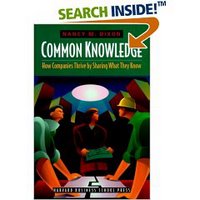 I vlogged Edward Addo-Dankwa (working for the Ministry of Food and Agriculture in Ghana and a board member of GINKS, a network on ICT for development in Ghana) about cultural obstacles to knowledge sharing for networks in Ghana. Unfortunately the video is very, very dark and I thought editing would help, but it didn't. I'm so sorry, but thought it would be a pity not to post it. To compensate I will add Eddy's picture here and my advice is to look at his picture while listening to his voice and what he has to explain, which is very interesting.
I vlogged Edward Addo-Dankwa (working for the Ministry of Food and Agriculture in Ghana and a board member of GINKS, a network on ICT for development in Ghana) about cultural obstacles to knowledge sharing for networks in Ghana. Unfortunately the video is very, very dark and I thought editing would help, but it didn't. I'm so sorry, but thought it would be a pity not to post it. To compensate I will add Eddy's picture here and my advice is to look at his picture while listening to his voice and what he has to explain, which is very interesting.I actually had various talks on the topic of how knowledge sharing works in the network and while designing the question for Eddy I thought asking about obstacles would make a negative question and almost choose the alternative of asking about succesful learning processes within the network. Nevertheless, I decided that you can't go around understanding some of the obstacles as well. I asked Eddy because we had discussed the same topic in July as well. He talks about 3 important elements: the fact that people are brought up with information flows from older to younger generations rather than lateral flows, the assumption that knowledge and wisdom comes with age and the perception that people will make money out of knowledge which inhibits free sharing of information.
He actually suggests that education is needed to change people's perceptions to realize that young people may have useful knowledge to contribute and complement. With regard to the fact that people can make money with their knowledge, you may think about ways of rewarding experts, in non-monetary ways. Which is exactly the art of a community of practice to draw in experts and keep them interested by rewarding them with recognition and interesting contacts.
Powered by Castpost














